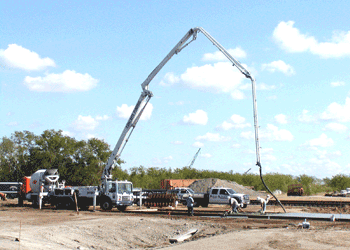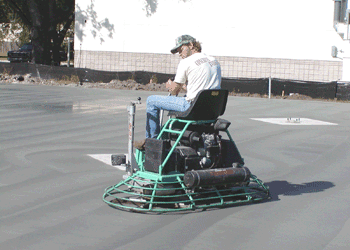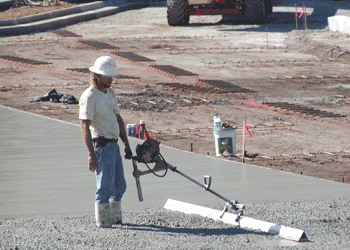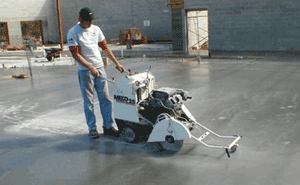Placing, Working and Finishing
Concrete must be placed expeditiously once it is mixed thoroughly. It can be off loaded directly from a ready-mix truck, transported by a crane lifted bucket, pumped or moved by conveyor.
Usually, trucks should not back over the area to be placed. This creates ruts and damages the integrity of the base. Other methods are needed to transport concrete over relatively short distances to avoid this. These include wheelbarrows, power buggies and come-alongs or rakes. For longer distances concrete pumps are used.





Using forms and grade pegs as guides, the concrete is then leveled to these guides with rakes, shovels and bull floats. Trowelling is critical. Too much work will bring too much cement to the surface, weakening the mix, and setting the stage for flaking after curing. Too little trowelling will leave exposed aggregate, which is also undesirable.
Expansion and shrinkage is provided for with control joints or saw cuts. If there is a lapse of time between the pouring of adjacent slabs, cold joints will occur. The correct use and placement of such joints is both a science and an art. Experience can not be over emphasized.
Before the concrete hardens beyond the workability stage, any decorative process should be added. These include picture framing, brooming, dying or decorative stamping.
